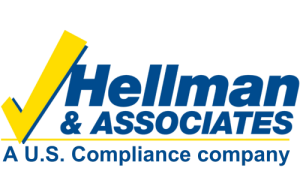Hot work includes welding, brazing, cutting, soldering, thawing pipes, using heat guns, torch-applied roofing and chipping operations, or the use of spark-producing power tools, such as drilling or grinding. Depending on the work environment, even things like cell phone use can be considered hot work in areas where large volumes of flammable liquids are handled. If you are new to the job, it is always important to ask about the hot work policy. The following safety considerations are provided for safe and successful hot work operations.
Hot Work Permits
If your company does not have a designated hot work area, a hot work permit system can be used. When filling out a hot work permit, things that you will have to consider and verify include:
- The presence of flammable or combustible liquids and other materials
- Access to a fire extinguisher and fire alarm pull box (if applicable)
- Clear exit and evacuation routes from the hot work area
- Designation of a fire watch (i.e., someone who monitors the hot work area and looks for fires)
- Adequate ventilation
- Covering of floor openings and wall openings
- Notifying others in the work area of the work to be performed
- Proper personal protective equipment (a welding helmet and leather gloves, at a minimum)
Fire Prevention
- Sparks and slag can fall through cracks or openings in floors, under doors, on combustible material or on flammable liquids. Sparks can fly 35-feet horizontally! Think about this before starting work.
- Metal being cut or welded can transmit heat and start a fire with nearby combustibles.
- A cutting torch accidentally coming close to a combustible material can start a fire.
- Move work to a safe place. If work can’t be moved, remove combustibles from area and sweep floors clean.
- Keep fire extinguishers handy and be fully knowledgeable on how to use them.
- Don’t cut or weld in the presence of flammable liquids or vapors, in the presence of lint or dust, or on unpurged containers that once held flammable liquids.
- Acetylene gas can ‘pool’ and ignite in poorly ventilated areas; avoid situations where pooling can occur.
Handling & Storing Cylinders
- Avoid dragging or sliding cylinders, even for short distances. Use a suitable hand truck to transport.
- Never drop cylinders or permit them to strike each other violently.
- Do not move the product identification label or change the cylinder color.
- When returning empty cylinders, close the valve before shipment, leaving some positive pressure in the cylinder. Replace all cylinder caps when returning the cylinder to storage.
- Always store cylinders in the upright position. Cylinders may be stored in the open, but should be protected from dampness on the ground to prevent rusting.
- Smoking or open flames are prohibited in gas cylinder storage areas. Post signage to inform others.
- Oxygen cylinder storage must be separated from flammable gas storage areas or combustibles by at least 20- feet or by a 5-foot tall non-combustible, fire-rated barrier.
